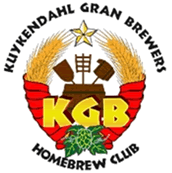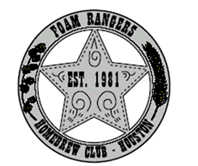Well, all the preparations are complete for this Saturday's NYE bash at the homestead. I have all the beers brewed, fermented, and bottled or kegged for copious consumption. For some of the readers that need a refresher course on beer nerd jargon, here ya go:
Original Gravity (OG): The Original Gravity is the specific gravity measured before the commencement of fermentation.
Final Gravity (FG): The Final Gravity is the specific gravity measured at the completion of fermentation.
ABV: Alcohol by Volume, stated as a percentage (e.g 6.5%). Most brewers and consumers are used to having alcohol content reported by volume (ABV) rather than weight. Interconversion is simple but the specific gravity of the beer must be known.
Final Gravity (FG): The Final Gravity is the specific gravity measured at the completion of fermentation.
ABV: Alcohol by Volume, stated as a percentage (e.g 6.5%). Most brewers and consumers are used to having alcohol content reported by volume (ABV) rather than weight. Interconversion is simple but the specific gravity of the beer must be known.
IBU - International Bittering Units : This is a measure of the actual bitterness of a beer as contributed by the alpha acid from hops. Because the apparent bitterness of a beer is subjective to the taste of the drinker and the balancing malt sweetness of the beer this is not always an accurate measure of the "hoppiness" of a beer. But, generally speaking, beers with IBUs of less than 20 have little to no apparent hops presence. Beers with IBUs from 20 to 45 are the most common and have mild to pronounced hops presence. Beers with IBUs greater than 45 are heavily hopped and can be quite bitter.
Example:
"Not knowing that the barleywine had an IBU of 68, Rachel took a big swig from the glass then twisted up her face as the hops assaulted her taste buds."And now, the LeGrue's NYE Tap Lineup:
- Belgian style Abbey Triple, originally brewed by and for Trappist monks in Europe.
- Light in color, malty, effervescent, very aromatic and deceptively strong.
- Examples: Unibroque "Fin du Monde", Chimay "Triple"
- 32 IBU 9.2% ABV.
- Strong wheat ale, seasoned with cinnamon and nutmeg.
- Bready and balanced, with hints of banana bread and clove and a dry finish.Similar to Brooklyn Brewing's Winter Ale, but with a traditional weizen yeast character and dry finish.
- 12 IBU, 7.6% ABV
- A black Imperial IPA, made with debittered dark malts that impart a black color and roasted flavor without the burnt toast astringency of a stout. Think "hop-bomb" in technicolor.
- This is a HUGE beer, very flavorful and aromatic. It has a citrusy hop- forward nose, and a clean, balanced hoppy bitterness throughout the palate.
- Examples of the Black IPA or Cascadian Dark Ale style would be Stone Brewing's "Sublimely Self- Righteous" and Dechutes' " Hop in the Dark".
- 106 IBU, 9.8% ABV........ Bring it!
Pumpkin Pie Porter 2011
- My annual holiday offering that includes fresh roasted pumpkins and toasted spices, all wrapped in a smooth, malty porter package.
- Dark reddish brown color, and the aroma is all pumpkin pie. The flavor is on the sweeter side, and has a caramel, toffee, toasted bread quality that is very nice. Great after a holiday meal, or any time if you're Brad.
- 36 IBU, 7.8% ABV
LeGrue's 2011 Winter Warmer Cask Ale
- This a my riff on the traditional beers brewed for cold months in Britain. Medium- strong, roasty, malt forward with a nice, full body and holiday spices to make things interesting.
- Enhanced mouthfeel and low carbonation due to 3 weeks conditioning in a cask, and served in the traditional style.
- Similar to Saint Arnold's Christmas Ale with spices.
- 42 IBU, 7.4% ABV




























